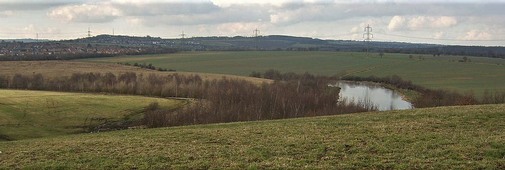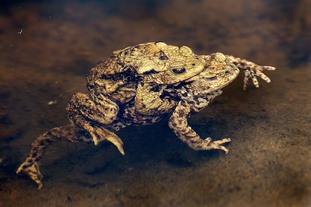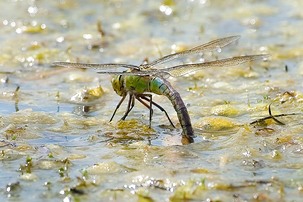

Biodiversity
Action
Plan
Standing water features
Species associated with standing water include aquatic species occurring in the water body itself such as fish and insect larvae.
Terrestrial species utilise exposed sediments or use the water body for foraging for food for example Otter, Heron and various duck species. Standing water also supports species like bats that, although utilising standing water for foraging, are not necessarily reliant on them.
A key feature of standing water is to provide the environment for breeding and the early stages of development of some species for example: amphibians, and dragonfly and damselfly species.
The loss of farmland ponds due to agricultural intensification is largely the reason for the decline in numbers of Great Crested Newt and its designation as a European Protected Species.
Standing water Species
Amphibians: Ponds and standing water support the amphibian species found in Barnsley: Common Toad, Common Frog, Smooth Newt, Palmate Newt, Great Crested Newt.
Reptiles: Grass Snake is sometimes present in larger ponds in an appropriate wider habitat.
Fish. Some sites support fish including Eel. The presence of fish can however prohibit the presence of some other species.
Invertebrates: Bottom-dwelling species such as snails, dragonflies, water beetles and many other aquatic insects are found in ponds.
White-clawed Crayfish can do well in ponds and standing waters of high water quality and we hope to use or create one or two ponds as ark sites to help support their survival.
Plants: Regionally scarce plants such as Autumnal Water Starwort, Frogbit, Whorled Water Milfoil, Hair-like Pondweed, the nationally scarce Sweet Flag may be found as well as Marsh Marigold, Yellow Flag and Amphibious Bistort.
Mammals. Mammals such as Water Vole, Daubenton’s Bat and Soprano Pipistrelle are all heavily dependent on larger ponds and canals. Water Shrews can also be found and Noctule Bat feeds over standing water.
Birds. Ponds and standing water provide foraging areas for breeding, migrating and over-wintering birds, especially waders and waterfowl.
Characteristic breeding birds associated with standing water include Canada Goose, Coot, Gadwall, Great Crested Grebe, Little Grebe, Moorhen, Mallard and Tufted Duck.

Standing Water Features
For standing water, high water quality, seasonal fluctuation and open, unshaded habitat are identified as being very important for many species, and, for ponds in particular, wet bare mud is of high importance for some species.
The surrounding habitat features are also important, partially to ensure the quality of the standing water itself, and significantly to support the requirements of amphibians and other partially land-based species.

